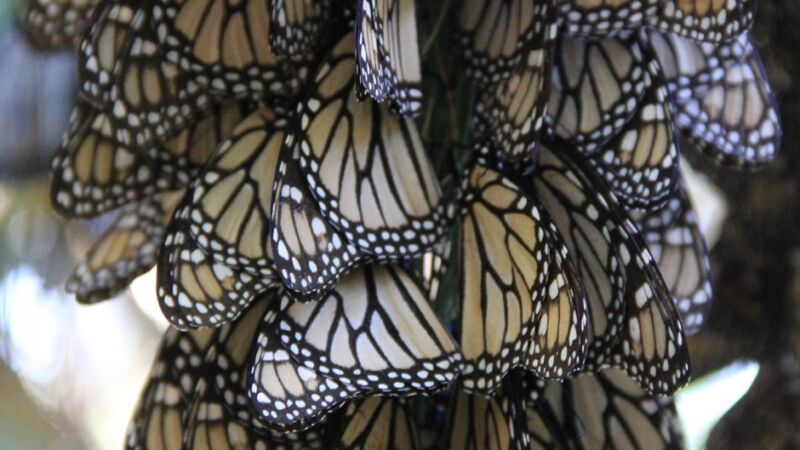
After a season with excellent weather conditions for monarch breeding and migrating, we have been anxiously awaiting the release of the 2015-16 eastern monarch population estimates. As released today by the Comisión Nacional de Áreas Naturales Protegidas, or CONANP, and World Wildlife Fund Mexico, 2015-16 eastern monarch numbers have increased. This winter’s monitoring indicates that the population is occupying 4.01 hectares, an increase of over three times last year’s 1.13 hectares. This is excellent news!
While this is exciting news, our work is not done. A soon-to-be published paper (which we will share here as soon as it is released by the journal) shows that 6 hectares of area occupied in Mexico represents a large enough population to absorb losses (and still recover) during years where severe weather events or other factors that lead to declines in monarch numbers may come into play. Good weather in the growing season this year allowed us to produce about the maximum number of monarchs as possible from the habitat we have, but we know that this amount of habitat can also produce many fewer monarchs in a bad year. All we need to do is look back to 2013, when approximately the same amount of habitat produced less than one hectare of occupied forest in Mexico. This suggests more habitat is needed to reach our goal of 6 hectares.
Considerable monarch habitat restoration and enhancement remains to be done across the monarch breeding and migratory range. To reach our nation’s target of 6 hectares overwintering area occupied in Mexico, an estimate of over a billion additional milkweed stems spread across the landscape is recommended. The Monarch Joint Venture and our 40+ partner organizations developed the 2016 Monarch Conservation Implementation Plan to help facilitate achieving these goals through coordinated habitat restoration, research and monitoring, and education and outreach.
Everyone can be involved in supporting the monarch population and migration for years to come, by creating or enhancing habitat for monarchs, participating in research or monitoring activities, educating others about monarchs or contributing financially to monarch conservation efforts. Visit this page to learn about the ways you can participate today.
For further information about how the eastern monarch overwintering population is counted, read this article by monarch experts Gail Morris, Karen Oberhauser and Lincoln Brower.

Data from 1994-2003 were collected by personnel of the Monarch Butterfly Biosphere Reserve (MBBR) of the National Commission of Protected Natural Areas (CONANP) in Mexico. Data collected from 2004-2016 were collected by the WWF-Telcel Alliance, in coordination with the Directorate of the MBBR.
The content in this article does not necessarily reflect the positions of all Monarch Joint Venture partners. Header photo taken by Wendy Caldwell at Cerro Pelon, Mexico in 2012.
